While there are many types of photographic equipment, such as reflectors and other light modifiers, stands, plus even gels used to create beautiful photographs of people, the camera lens itself is the physical funnel that leads down to the camera’s image capture device. As the image barrels down to the sensor, it’s like a chef squeezing a pastry bag to put the icing on the cake. While many people use butter knives to frost their cakes, great chefs utilize great cooking utensils for the final presentation. A photographer’s cameras and lenses are like the chef’s pots and pans used to cook a fine meal—the ingredients are combined with these tools before they are presented for consumption.
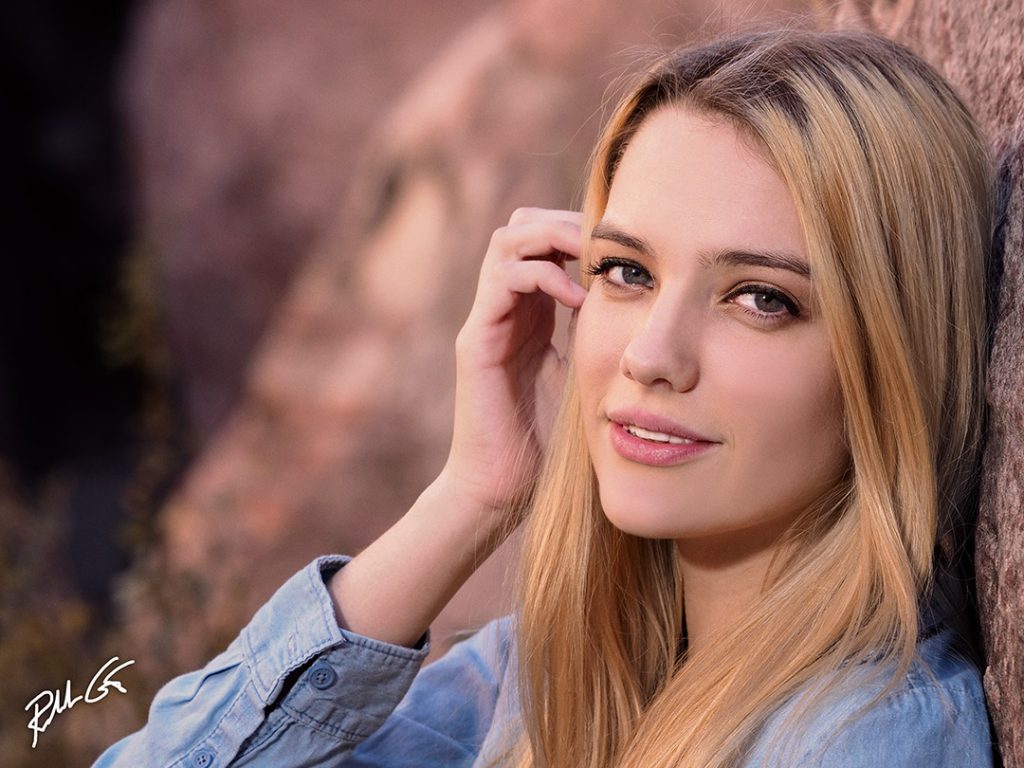
This photo of Kenna was captured at 212mm focal length and f/4.5. Notice the compression of the background and separation from the subject.
Often the proper tools are what distinguish a cook from a connoisseur chef. Pots and pans are the tools for any cook, but great chefs know the difference between a copper-bottom pan and a cast iron skillet. They know that ultimately, it’s about using the right tool for the right job, as a chef will not boil an egg in a sauté pan nor would a chef broil shrimp in a crock pot. The same is said about a professional photographer, as they’d rarely consider a disposable camera to create a masterful photograph. Sure, there are a few photographers that will take short cuts, but that’s because they know the rules, fundamentals and concepts of photography and have mastered them to their advantage.
With that said, let’s look at what can separate a great photographer from the average guy with a camera, or as it’s known on the Internet, the GWC. A great photographer realizes, aside from great lighting, ultimately, it’s great glass that will make the difference. Glass, or a camera lens, specific to the desired result, and when photographing people, a photographer must understand that the subject is the main ingredient of the final image, the backgrounds and foregrounds are secondary. These “grounds” should only accentuate the subject and help tell her story, just like side dishes accentuate a main course.
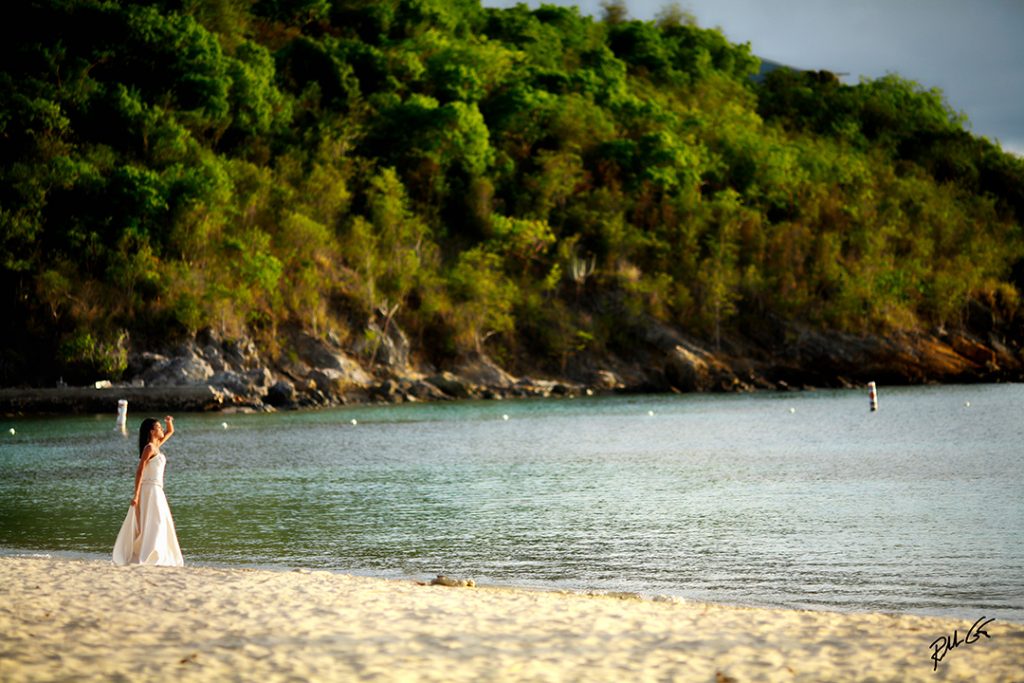
This photo of Candice was captured at 135mm focal length at f/2. Notice how the background is magnified, even though this appears to look like a wide-angle shot.
The Lenses
Because the subject is the main focus, traditionally, great photographers use medium-telephoto to telephoto lenses when capturing their subject’s beauty primarily in the range of 85mm to 200mm, in relation to 35mm format photography. These types of lenses provide several key aspects that ensure their subject separates from the grounds. In addition, due to the lack of depth of field from these stronger magnification lenses, the grounds are optically thrown out of focus, provided the photographer focuses his lens on the subject’s eyes. This helps keep the viewer of the final image focused on the subject too.
These longer lenses also compress the background, and create an illusion that the subject is closer to the background, though normally the subject is placed at a comfortable distance away from the background. These lenses also magnify the background and this is real important during sunsets so the sun appears larger in the background and not marbled-sized or small, as created by much wider-angled lenses.
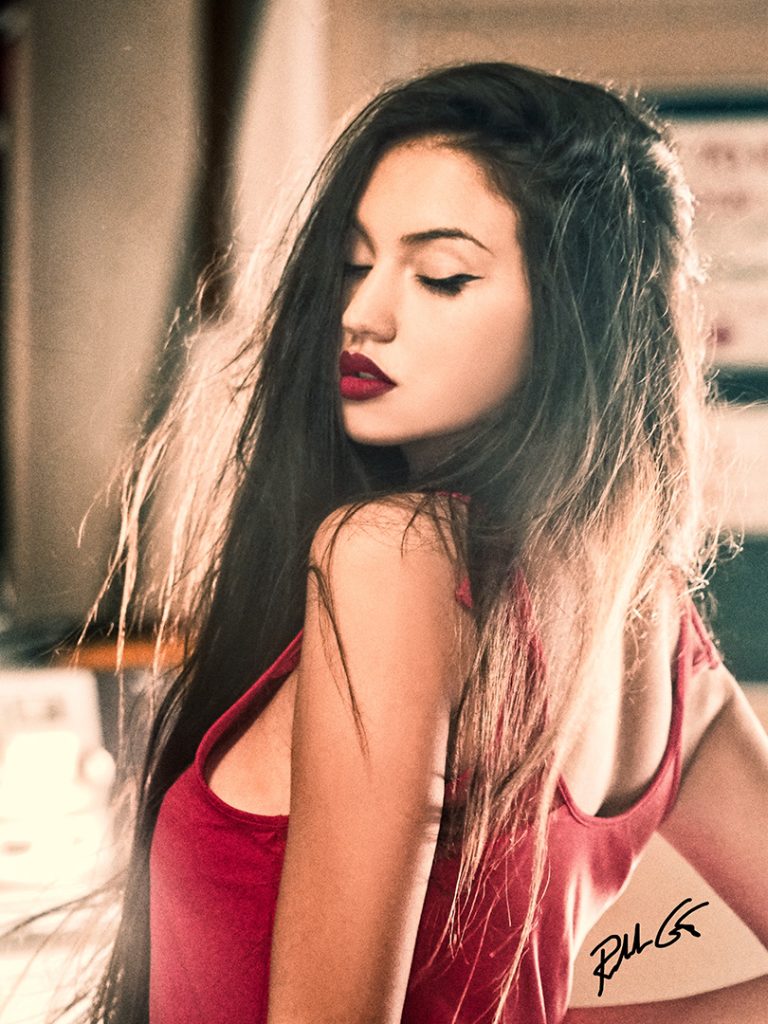
This photo of Dilara was captured at 220mm focal length at f/3.5. Notice how the lack of depth of field and the mood it adds to this photo.
Longer lenses also help the photographer by naturally providing tight composition where the subject tends to fill the frame more with her body, thus reducing any distractions created by the grounds. These lenses also provide for a greater comfort distance between the photographer and the subject for proper composition and framing, thus the photographer is not right on top of the subject breathing down their neck. This natural space created between the photographer and the subject is important, especially when photographing fine-art nudes or women in sexy outfits and poses. Most people value their private space and photographers will find their subjects are more comfortable in this type of shooting space.
Another element that helps in the photography of women, especially in digital photography today, is the natural layer of make-up, or smoothing of the skin created by adjusting the aperture of a long lens to around f/5.6 or wider. These lower apertures create an optical Gaussian blur of the skin when a photographer focuses dead on the eyes of their subject, as the depth of field will fall fast and in today’s tack-sharp lenses and super sharp image capturing sensors, this is important. Unlike film that had a natural softness due to its cellulose construction and natural curvature, digital sensors are flat and capture the minutest detail—that’s one reason celebrities hate digital high-definition (HD) television, as they don’t want everyone to see their pimples and pores that’s often hidden with film and low-resolution television.
Avoiding the Sweet Spot
There is one other factor on why photographing women, especially more mature women, is best done at the lower apertures of a lens—to avoid the sweet spot of the lens, or it’s optimum aperture. All lenses, and this varies with manufacturer, make and model, have an optimum aperture, which is their sharpest point in the optics. Many inexperienced photographers believe that their lenses are sharpest at their highest f/stop number, or the minimum aperture of the lens, this is false. There is only more depth of field at f/16, f/22 and higher f/stop values.
Most lenses have an optimum aperture usually between f/8 and f/11. Some are lower, some higher, but for the most part, this sweet spot falls in the middle aperture ranges of most lenses. When a photographer avoids the optimum aperture of a longer lens and uses a lower aperture value, provided the camera is focused tack sharp on the subject’s eyes, the final image will have an optical smoothness for most of the subject’s face. In this method, the eyes are the sharpest part of the image and since the cheeks are closer to the lens than the eyes, the cheeks and outer facial structures subtly and optically become out of focus, thus smoothing out the skin.
Obviously, there are occasions where I prefer higher f/stops or smaller aperture openings, usually these are more when on location outdoors and even more specifically when I’m overpowering the sun with flash. If I use a higher aperture value outside these parameters, it’s normally when working with younger models or female subjects with a smooth, youthful complexion.
The Importance of Great Glass
Now while avoiding the sweet spot and using medium-telephoto to telephoto lens are a must in photographing women, most photographers wind up with pictures and not photographs because they opt for lower-grade glass, or lenses in the 85mm to 200mm range that have a maximum aperture (lower f/stop) of f/4 or even f/5.6. These lenses provide for less light intensity to strike the image capture sensor, but ultimately, it causes for a darker viewfinder. In dark situations, like sunsets, it becomes more difficult for the camera to focus the lens, often causing a delay during the shoot and thus the photographer to miss a great shot.
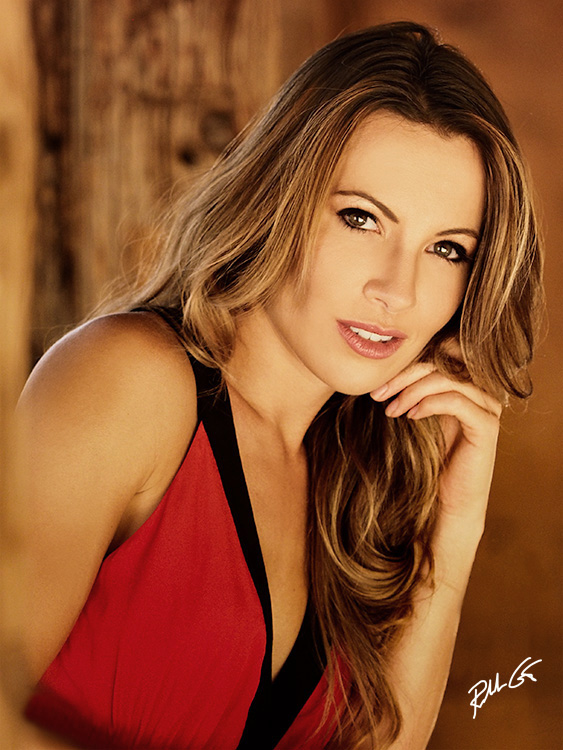
This photo of Jessica was captured at 300mm focal length at f/3.2. She is illuminated by natural sunlight reflected off a SUNBOUNCE PRO with a SPARKLING SUN fabric screen.
Lenses, like great studio flash units, should last a photographer for many, many years and should never be skimped upon. I highly recommend, if you can’t afford a lens that has a maximum aperture value of at least f/2.8, that you wait and save your money for it, or an even faster lens. Purchasing a slower lens with a maximum aperture of f/4 or higher, is another factor that separates a great photographer of women from the guy with a camera. Obviously, there are some lenses, usually of much longer focal lengths and greater magnification, such as a 600mm lens, that the maximum aperture is no wider than f/4 or f/5.6, but this is due to the physics of the optics, not necessarily the quality of the glass. However, in the 85mm to 200mm range, especially with the 70-200mm zoom lens, there is no excuse, for a photographer of women not to have a lens with a maxim aperture of f/2.8 or better.
I’ve taught hundreds of photography workshops and seminars over the decades where photographers arrive with the top-of-the-line camera bodies, but with cheap lenses and the best analogy I have for that, it’s like cooking a marbleized, aged, prime beef filet mignon in a portable toaster oven. Now that brings me to the photographer’s camera body—similar to the culinary chef’s cook-top, it’s a valuable piece of equipment that we need to create our masterpiece.
The Camera Body
While there are many makes and models of camera bodies in today’s digital world where technology changes every Monday when the Board of Directors meet, my best recommendation for a camera body is to purchase one that is at least at the “prosumer” level to the higher-end level. Remember, it’s about the glass and if you take the time and save the money to purchase a top lens, why would you attach it to a camera body that doesn’t give you the intended effects of the lens’ optics?
There are plenty of camera bodies that are not necessarily at the very top-of-the-manufacturer’s-line, but provide for true lens magnification and optics at a reasonable price. It’s all about using the right tool for the right job, and in the publication world for printing only so many pixels of resolution are needed, sometimes making the top pro cameras overkill. And as more and more publications fold, you’ll find the demand for Internet images are higher and the resolution, due to browser and computer display limitations, even lower.
If I even attempted to write a book about specific camera makes and models and which ones I recommend are best, by the time my book appeared on a bookshelf and you purchased it, the camera bodies mentioned would be obsolete as they change quicker than their predecessor film cameras, so I’m going to give you a few things to consider before you make your camera purchase.
First, as mentioned earlier, go with the best camera that suits all your needs—without exceeding your needs. With today’s technology, don’t let mega-pixel hype influence your decision. Digital technology is not a revolution, it’s an evolution. Camera sensors are so good today that most photographers who use their ultra-high-speed capabilities don’t even worry about digital noise, like they did with the grain of film.
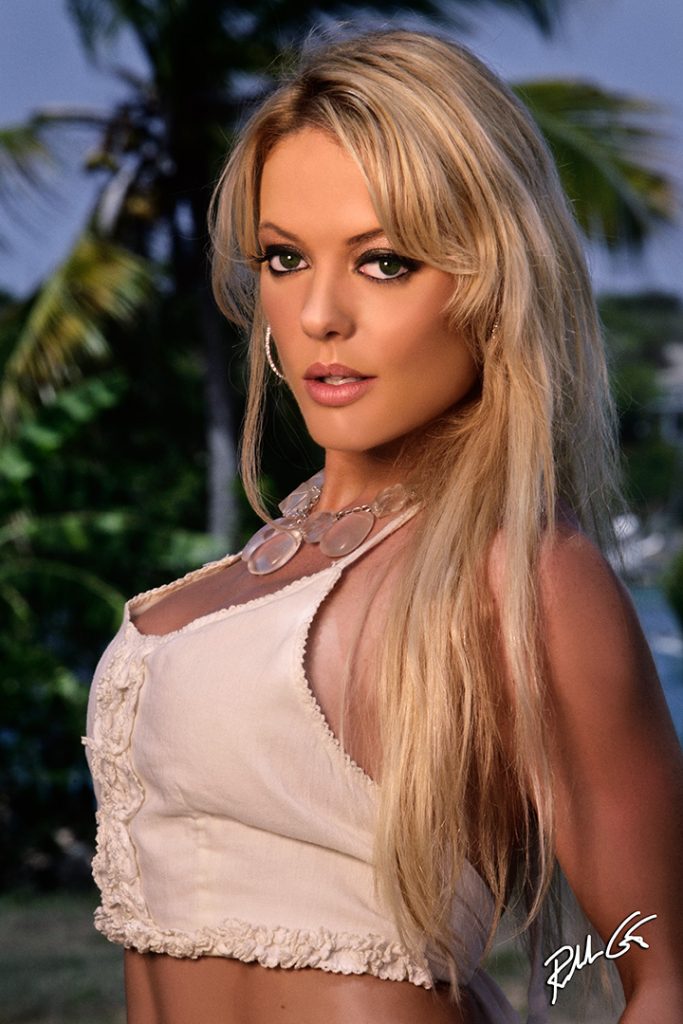
This photo of Tess was captured with a focal length of 200mm at f/20. The crop allowed me to come closer to the model, thus a more compressed and blurred background at this higher aperture.
I will say this, gather all the information you can about any specific make and model you think you might purchase, dig through the marketing hype, and if you can rent the camera first, do so. Purchase only what you need, not what everyone else wants, as by the time you’re ready to move up a level in photography, your old camera body will be worn and probably no longer manufactured—save it as a back-up body.
And if you’re price conscious, camera bodies drop in price shortly after introduction into the photographic markets—and by then, all the bugs have been worked out and the camera software, or firmware, is usually updated, so don’t rush to get the latest and the greatest if you don’t need it instantly. Take your time, make educated purchasing decisions, don’t purchase on impulse. Wait for the camera holiday sales and most important, visit photography forums and see what people who are using the camera are posting about it.
Every even-numbered year, around September, is the world show for the photo industry, called Photokina, is held in Germany. This is a great time to look for new products and announcements from the top camera manufacturers. Usually after these announcements, the current models on the store shelves begin to drop in price for anticipation of the new products. Shop wisely and you’ll save hundreds of dollars that you can apply to better quality lenses.
In Summary
A photographer’s toolbox consists of many items, from photography reflectors to production computers and like a chef’s arsenal of pots and pans used to bring all the ingredients together for a delicious meal, the proper camera body and lens make a funnel for a photographer to create the perfect photograph.
When it comes to lenses, purchase those with fast glass, or low maximum apertures especially those in the 70-200mm range, often used to photograph women. Your lenses should be at least f/2.8 or better which not only guarantees much better optics than slower lenses, but provides for a bright viewfinder and the “three C’s” of photographing women—comfort distance between you and your subject, compression of the background and nice tight composition.
Finally, when it comes to camera bodies, go with the best camera that suits all your needs—without exceeding your needs. Don’t fall for marketing hype. Plan your photographic equipment purchases after the major photo industry trade shows—then take the money you saved and have an amazing connoisseur meal from a great chef!



